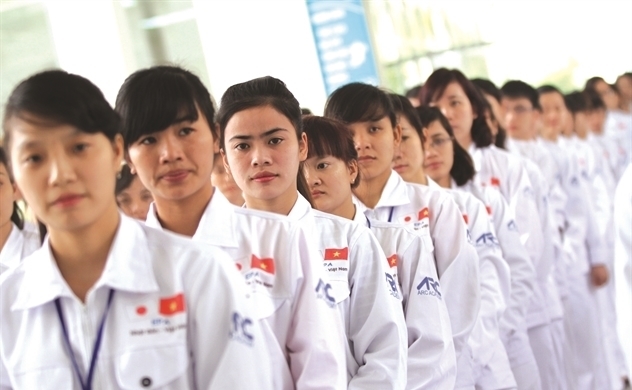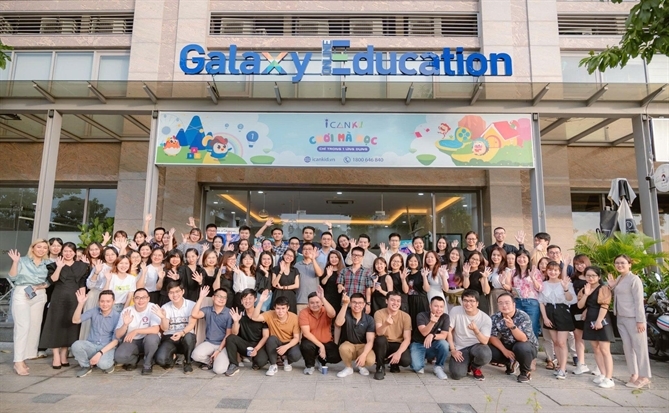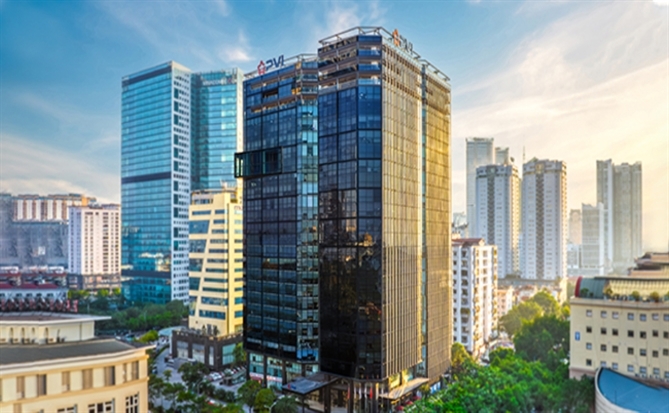The dark side of labor export

Photo: japan.net.vn
Nguyen Ngoc Son, a native of Nghe An province, now lives in the Binh Thanh district of Ho Chi Minh City to prepare to become a guest worker in Japan. Many acquaintances in the countryside also went on this occasion, so Son joined with a total budget of nearly VND100 million. With a mechanical secondary diploma, he hopes to find a related job in Japan.
According to the Department of Foreign Labor Management, Japan hired 55,690 Vietnamese workers in the first nine months of 2023, making it the top market for Vietnamese workers.
This is also the favorite country of Vietnamese workers, with more than 345,000 people living and working here. Ranked 2nd and 3rd in terms of receiving Vietnamese workers are Taiwan (46,166 workers) and South Korea (2,449 workers).
In the first nine months of the year, Vietnam exceeded the target of 101.37% of the yearly plan when sending Vietnamese workers to work abroad under contract with 111,507 people. That is a positive sign in the context of the global economy slowing down and directly affecting the ability to provide jobs in developing countries.
According to the General Statistics Office, in the second quarter of 2023, there were 1.08 million unemployed people of working age. Therefore, in addition to continuing to develop traditional markets, this year the Ministry of Labor, War Invalids, and Social Affairs also expanded labor export promotion in new markets, especially in Europe such as Hungary, Poland, Slovakia, and Croatia...
But the problem is that the labor export policy not only attracts people of working age, but even new students consider choosing to work abroad rather than investing four years in training programs. after high school.
Minh Tan is a typical example. For 25 million VND a year at a public school and twice that amount at a private school, the youngster from Long An was accepted to two universities, where he planned to major in economics.
For Tan, though, studying abroad was the best choice because living in Ho Chi Minh City is very expensive while he is in school, and there is no guarantee that he will have a stable job after he graduates.
Observing his peers studying in the same field, Tan realized that many people have seniority in the profession but are still easily replaced whenever the market fluctuates. That made Tan consider his decision even more carefully. Finally, Tan chose to study construction in Australia because this country is in need of young workers to join this industry, so it has many supportive policies.
There are not any exact numbers on how many young people choose to work abroad instead of going to college, but the World Bank's "Education for Growth" report from 2022 did mention this.
The number of students attending colleges and universities has shown signs of slowing down since 2019 because many families are wondering whether to send their children to further education or not.
Tuition and the average total cost of attending university have doubled between 2010 and 2020. For example, only travel and accommodation costs for studying at university in one year have increased from $143 (about VND3.5 million) in 2010 to an average of $559 (nearly VND14 million) in 2010.
Vietnam's education sector is facing a crisis, with only 10.2% of the population having college or university degrees by 2019. Without significant investment in education, the proportion of workers with college or university degrees could drop to less than 15% by 2050, highlighting the need for improved human resource management.
The Vietnamese government's socio-economic transformation goal of becoming a high-middle-income economy in 2021–2030 is significantly influenced by this. Vietnam is currently the third-largest FDI recipient in the region and one of ASEAN's few countries maintaining growth with stable FDI capital flows.
However, many domestic and foreign investors have expressed concern over the local lack of a skilled workforce, directly affecting labor productivity to recover and expand production and business. in key industries.
In fact, average labor productivity in 2021–2023 increased slightly from 4.36% to 4.69%, lower than the 6.26% level of the 2016–2018 period. “FDI enterprises always need high-quality human resources to apply new technology and high labor productivity. If high-quality human resources are not focused on improving in the coming time, Vietnam will gradually lose its attractiveness to attract foreign investment," Mr. Dung said.
Obviously, while the lack of human resources with low degrees and certificates (26.2%) has been a painful problem for the Vietnamese economy, labor exports can make this situation worse. become more serious.
Labor exports temporarily address employment issues, but if domestic training policies don't increase job availability, they could hinder domestic companies' resource development and foreign direct investment (FDI) in the long term.
Vietnam's foreign labor force can compensate for the shortage of domestic human resources, ranking second in Southeast Asia, according to an InterNations survey in 2022. However, the cost is too high, leaving Vietnamese businesses with no other options to compete. This situation could lead to poor families hiring high-income maids.

 TIẾNG VIỆT
TIẾNG VIỆT 















